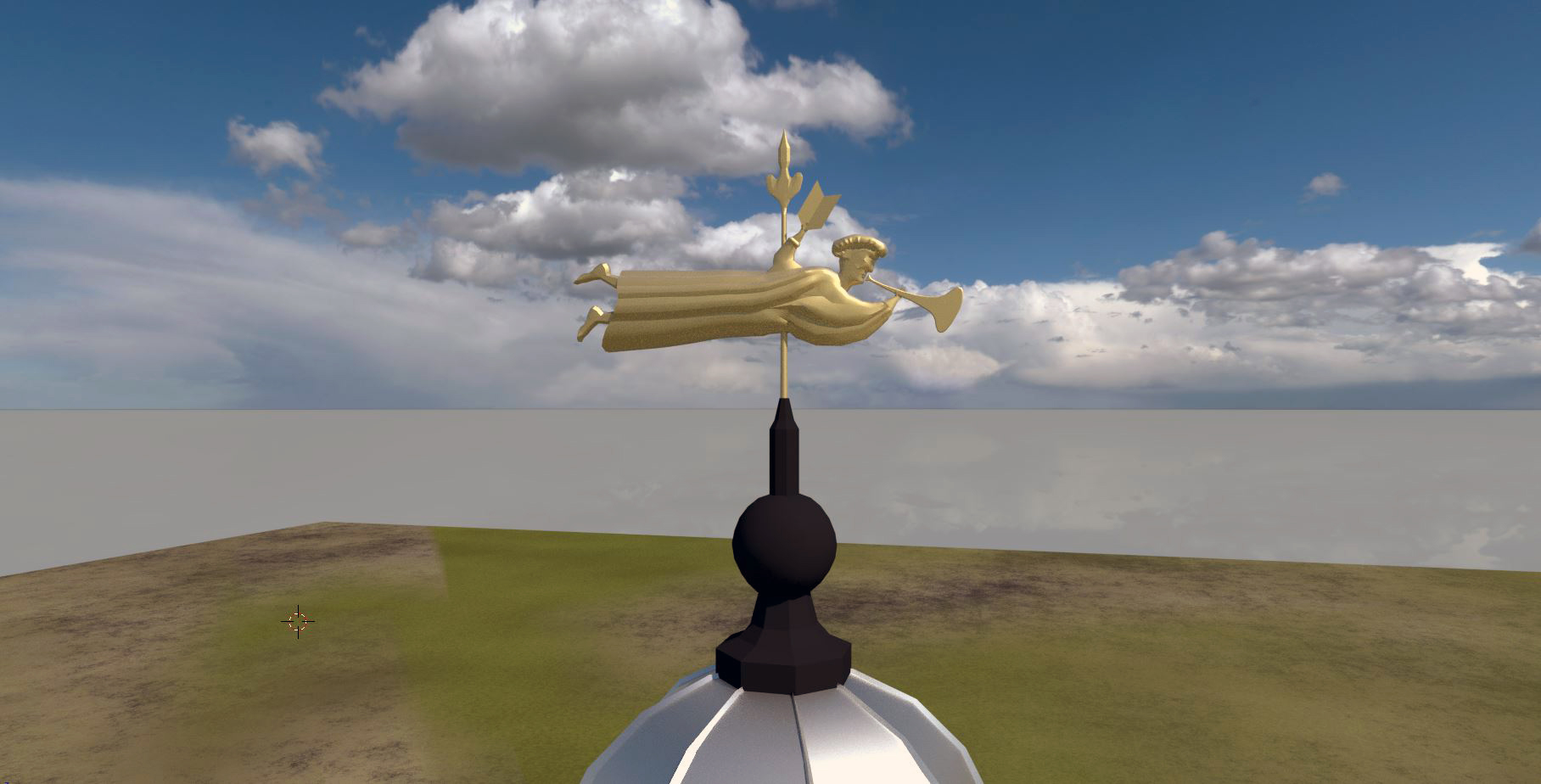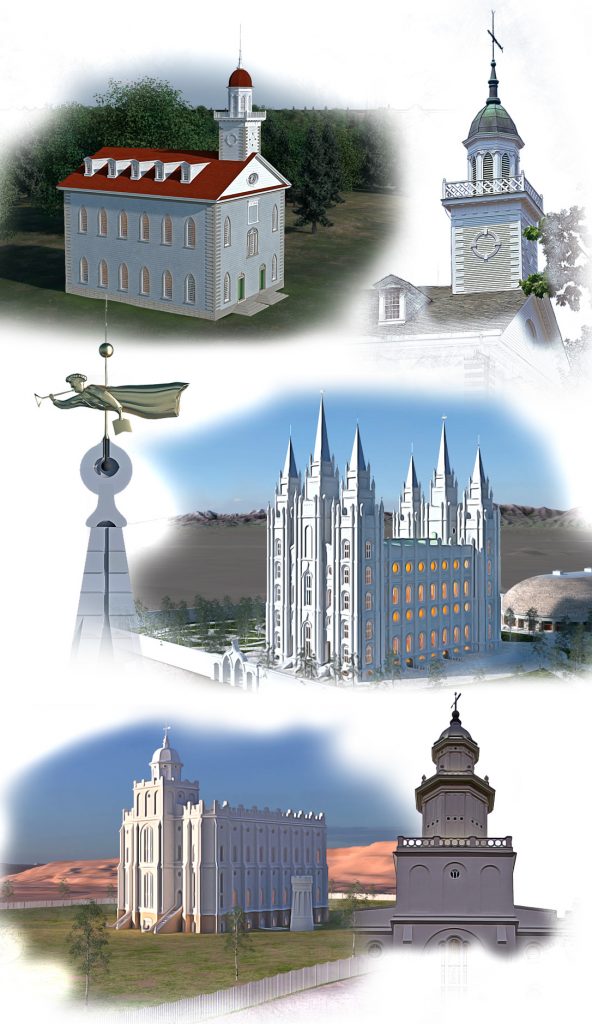
Fashion and Function: Weather Vanes
Did you know that before there were ever Angel Moroni statues, there were weather vanes? Weather vanes had been in use for millennia. They can be traced back at least as far as Athens, 48 years prior to the Birth of Christ.[1]Roe, Frederick Robert 1920-. Angels: Moroni and his associates / Fred Roe [Bountiful, Utah]: The Author, 1992 May 1992 printing, (accessed: August 12, 2019) Starting out as a simple directional indicator, eventually weather vanes would become ornate, and, in some cases, even become a type of symbol themselves. For example, by Papal decree, in the ninth century a rooster was added to every church weather vane as a reminder of the story of Peter denying Christ, and the cock crowing thereafter. [2]Roe, Frederick Robert 1920-. Angels: Moroni and his associates / Fred Roe [Bountiful, Utah]: The Author, 1992 May 1992 printing, (accessed: August 12, 2019)
Why Weather Vanes
In the United States weather vanes became a necessity in agricultural communities and seafaring communities alike. It would become a tradition to decorate such vanes with fish, cows, buggies, furniture, or horses.[3]Roe, Frederick Robert 1920-. Angels: Moroni and his associates / Fred Roe [Bountiful, Utah]: The Author, 1992 May 1992 printing, (accessed: August 12, 2019) Churches in the United States and Europe alike would adopt an angel with a trumpet as, representative of the angel Gabriel, as a symbolic weather vane. [4]Roe, Frederick Robert 1920-. Angels: Moroni and his associates / Fred Roe [Bountiful, Utah]: The Author, 1992 May 1992 printing, (accessed: August 12, 2019) Such a common symbol would eventually contribute to the common misunderstanding among those not members of the Church that the statue on top of L.D.S. Temples also represents the Angel Gabriel, rather than the Angel Moroni.
Combining a functional weather indicator for the community and a lightning rod, weather vanes were in fashion at the time of the restoration. It was common to see these architectural elements on religious and civil structures alike. As such, it would be a natural choice for the members of the Early Church of Jesus Christ of Latter-day Saints when deciding with what to decorate the most holy of structures within the Church.
Temple Weather Vanes
Kirtland Ohio
The first temple of the Restored Church, dedicated in 1836, was in Kirtland, Ohio. The temple was three stories, (not including the basement) covered in sparkling stucco and stood at the top of the south ridge of a river valley. On top of the single tower an arrow weather vane turned with the wind.
St. George Utah
After the Church relocated to Utah, the first temples built in their new home would also have weather vanes, the design again returning to the form of an arrow. The St. George Temple had one on its original short tower. Its newer, taller tower does as well.
Logan Utah
The Logan Temple has two towers, one at each end. Both towers have a weather vane at their peak. The Vanes have been gilded, and in later years, have been fixed in place permanently, one pointing North, the other pointing South.
Salt Lake’s Planned Weather Vanes
They were even considered for the Salt Lake Temple. Early drawings of the Salt Lake Temple design feature two weather vanes. These vanes took the form of a flying figure, an angel, lying horizontal and holding a book. There were plans to have one each on the tops of the east and west central towers.


Manti Utah, Departure from Weather Vanes
It was not until the fifth temple constructed in Manti, Utah that the saints would break with the tradition. This temple has neither weather vane nor statue.
Nauvoo Illinois, The most Famous Temple Weather Vane
But the most famous temple weather vane, the most unique, and the one that provided the inspiration for the early weather vanes planned for Salt Lake, has to be the one from Nauvoo Illinois.
The second temple of the Church featured a weather vane as well. Like churches throughout Europe and the United States before it, the weather vane was in the figure of an angel with a trumpet, a symbol that would evolve into a modern-day symbol of the Church.
Chapter 2 Navigation
